… Der wahre Wert eines Menschen ist in erster Linie dadurch bestimmt, in welchem Grad und in welchem Sinn er zur Befreiung vom Ich gelangt ist.
[The true value of a human being is first determined by the degree and meaning concept of self-freedom he or she has attained].
— Albert Einstein [1]
The universe is the most fundamental wonder: we, as humans, face it every day, contemplate it in endless amazement, question it in our search for answers. And long ago, at a particular moment in a tiny piece of that great wonder, a second wonder, perhaps deeper in reach, emerged: life. Then, slowly, life evolved to contain within it a third wonder, possibly greater in some respects than the universe itself: the human mind.
Hence, we are in the presence but also a part of three immense, marvelous, and, yes, appalling wonders or facts or entities…. What is the proper word? Without suggesting that faith is an illusion or that science is devoid of mysticism, we can say that those who call themselves believers regard these three wonders as acts of design, as the creations of the Great Engineer; most scientists, on the other hand, could be better called doubters, embracing a scientific position based on methodic doubt, as René Descartes (1596–1650) stated, permanently searching for factual demonstrations. The scientist’s position is that of a skeptic, assessing everything from a fresh perspective, clear of any preconceived notions.
More recently, in the 1950s, a position similar to Descartes’s was expressed regarding the supreme maker by Atahualpa Yupanqui (a pen name that in the Indian Quechua language refers to that who comes from far away to say something). His real name was Héctor Roberto Chavero Aramburu (1908–1992), and he was Argentinian musician, composer, and poet—a real modern troubadour—and a philosopher too, if we accept that the man on the streets or in the country or the hills may be a philosopher, even though perhaps a naïve or simple one. He produced and recorded a musically beautiful song, very sad in its lyrics, the title of which is “Preguntitas sobre Dios” (in English, “Little Questions about God”), easily available on the Internet and YouTube. Atahualpa, with great respect, used to call himself a doubter, too, although obviously not in the scientific sense.
Significant is the fact that human beings appear as divided in three very broad groups—believers, disbelievers, and doubters—and by adopting one of the three positions, the little and solitary human being in the universe chooses a specific behavior in life, with questions such as
- Is there a purpose for the universe?
- Is there a purpose for life?
- Is there a purpose and a limit for the growth of the mind?
These questions have occupied, and also disturbed, the thoughts of many thinkers concerned with the history of human evolution and development. Other similar questions may be posed: for example, why is it that only human beings enjoy a mind?
This article intends, in a modest way, to bring forward some musings recalling the superb biological heritage left by four great thinkers in this tradition: Jean-Baptiste-Pierre-Antoine de Monet, chevalier de Lamarck (usually referred to as Jean-Baptiste Lamarck), a Frenchman (1744–1829); Charles Robert Darwin (1809–1882) and Alfred Russel Wallace (1823–1913), both British; and Florentino Ameghino (1854–1911), Argentinian. Their contributions included a few simple but well-thought efforts at quantification. They were called naturalists in their day. In fact, Lamarck coined the word biology to designate the science that studies living organisms. Interestingly enough, Darwin and Wallace had no formal academic degrees, Ameghino was only a schoolteacher, and Wallace worked for some time as a schoolteacher as well.
Obviously, then, creativity and curiosity are gifts that are with an individual at birth, perhaps confirming the Spanish adage (or adagio), “lo que Natura non da Salamanca non presta” (that is, “what nature does not give, Salamanca [a prestigious university dating to 1218] does not provide”): in other words, gifts denied by genetics cannot be fully replaced by the best education, a good curriculum does not guarantee wisdom or intelligence (although, admittedly, such gifts can also be acquired with perseverance and hard work).
Lamarck
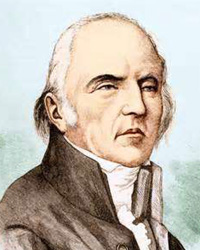
Born in the north of France, Lamarck (Figure 1) was the youngest of 11 children in a family with a tradition of military service. The young Lamarck entered the Jesuit seminary at Amiens around 1756, but not long after his father’s death, he joined the army. After peace was declared in 1763, Lamarck spent five years on garrison duty in the south of France, until an accidental injury forced him to leave the army.
After working as a bank clerk in Paris for a time, Lamarck studied medicine (although he never practiced it) and later botany, at which he rapidly became an expert; this helped him in procuring a position at the royal botanical garden (Jardin des Plantes), where he continued his medical education activities along with biological research (though the position was underpaid).
In 1793, the same year that Louis XVI and Marie Antoinette went to the guillotine, the Jardin des Plantes was reorganized as the Musée National d’Histoire Naturelle (National Museum of Natural History), and Lamarck was appointed professor. Almost by sheer chance, he was required to devote himself to invertebrates (he himself coined the term), organizing an enormous collection. He wrote,
Attention should be turned to the invertebrate animals because their enormous multiplicity in nature, the singular diversity of their systems of organization, and of their means of multiplication show us, much better than the higher animals, the true course of nature, and the means which she has used.
Lamarck published a series of books on invertebrate zoology and paleontology; of these, Philosophie Zoologique, published in 1809, most clearly states Lamarck’s theories of evolution (Figure 2). The first volume of his Histoire Naturelle des Animaux sans Vertèbres was published in 1815, the second in 1822. His work here foreshadowed that of Theodor Schwann (1810–1882) and Matthias Schleiden (1804–1881) in cell theory with his declaration that “nobody can have life if its constituent parts are not cellular tissue or are not formed by cellular tissue.”
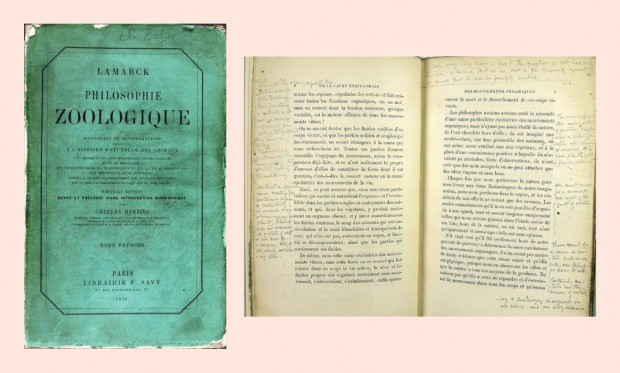
With an exceptional working capacity, rather early in scientific history, he formulated the first theory of biological evolution, the main contributions of which can be summarized as [2]
- the concept of the organization of living organisms
- the idea that there is a clear division between the organic and inorganic worlds
- the development of a revolutionary animal classification system based on their complexity.
Lamarck proposed that the great variety of organisms, which in those times were accepted as static forms created by a supreme being, had evolved from simple forms. Protagonists of that process were the organisms themselves because of their adaptability to the environment, whose changes generated new requirements, implying biological changes that became inheritable. Due to these ideas, he faced strong opposition and even mockery.
Unfortunately, Lamarck’s works never became popular during his lifetime, and he never won the respect or prestige enjoyed by his colleagues. Moreover, he was actually discredited, and most of his life was a constant struggle against poverty. Blind in later years, he died on 28 December 1829, receiving a poor man’s funeral. No one now knows where he was buried. Lack of recognition marked him permanently; sad, indeed.
It must be remarked that Lamarck’s theory does not refer to the origin of life. During his lifetime, it was believed that life appeared spontaneously. Much later, after about 50 years, Louis Pasteur (1822– 1895) demonstrated that such a position was utterly wrong, and he also faced tremendous opposition and even scorn. No doubt, however, Lamarckism, as it was named, was not totally misguided, and it must be recognized as a good scientific antecedent of the biological lines that would later be introduced. Not significant but quite interesting, in 1826 an anonymous paper, probably written by the Scottish naturalist Robert Jameson (1774– 1854), praised Lamarck for explaining how higher animals had evolved from the simplest worms; this was the first use of the word evolved in a modern sense.
Darwin and Wallace
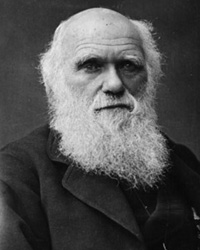
The genius of Charles Darwin, suddenly turning all of biology upside down in 1859 with the publication of his On the Origin of Species, can offer the misleading impression that the theory of evolution sprang out of his head without any historical precedent. In fact, earlier knowledge from geologists, paleontologists, embryologists, and other naturalists had provided the raw material for Darwin’s theory. A visit to the Galapagos Islands in 1835 helped Darwin formulate his ideas.
Darwin and Alfred Russel Wallace (Figures 3 and 4, above and below) independently conceived of a natural, even observable, way for life to change, a process Darwin called natural selection. In the struggle for existence, survival and reproduction do not rely on pure chance. Darwin and Wallace both realized that if an animal has some trait that helps it withstand the elements or breed more successfully, it may leave more offspring than others. On average, the trait will become more common in the following generation and the generation after that.
Darwin acted with remarkable fairness. In the introduction to his momentous book [3], after describing the voyage (27 December 1831–2 October 1836) of the HMS Beagle [4], Darwin wrote,
As my health is far from strong, I have been urged to publish this Abstract [he considered the book an abstract!]. I have more especially been induced to do this, as Mr. Wallace, who is now studying the natural history of the Malay Archipelago, has arrived at almost exactly the same general conclusions that I have on the origin of species. Last year he sent to me a memoir on this subject, with a request that I would forward it to Sir Charles Lyell, who sent it to the Linnean Society, and it is published in the third volume of the journal of that society. [pp. 53–62]
[Charles Lyell (1797–1875) was a Scottish geologist. His achievements laid the foundations for evolutionary biology and an understanding of the earth’s development.]
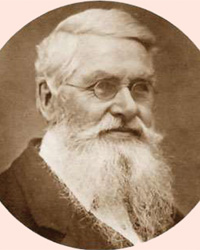
Wallace did extensive fieldwork, first in the Amazon River basin and then in the Malay Archipelago, where he identified the faunal divide, now termed the “Wallace Line,” that separates the Indonesian Archipelago into two distinct parts (as we will describe later in this section). Wallace had once briefly met Darwin and was one of the correspondents whose observations Darwin used to support his own theories. Wallace trusted Darwin’s opinion on the matter and sent him his February 1858 essay titled “On the Tendency of Varieties to Depart Indefinitely from the Original Type.” After reading it, Darwin commented that he himself could not have made a better short abstract of his own theory!
Wallace’s nine-page essay is often called the “Ternate essay” because it was written on Ternate Island, part of the Moluccas in eastern Indonesia. Wallace concluded the essay with the following words:
This progression, by minute steps, in various directions, but always checked and balanced by the necessary conditions, subject to which alone existence can be preserved, may, it is believed, be followed out so as to agree with all the phenomena presented by organized beings, their extinction and succession in past ages, and all the extraordinary modifications of form, instinct, and habits which they exhibit.
Darwin’s book was a best seller and highly influential in the scientific world. Yet it took time for its full argument to take hold; in the end, though, most scientists accepted that evolution and the descent of species from common ancestors were real. However, natural selection had a harder time. It would take the discovery of genes and mutations in the 20th century to make natural selection not just attractive as an explanation but unavoidable.
Importantly, Wallace helped found the modern science of biogeography—the study of how species are scattered across the planet and how they got that way. His 1876 book The Geographic Distribution of Animals contains plates depicting the animal life of the biogeographic regions he identified. For him, and for Darwin too, biogeography was simply a record of inheritance, but Wallace pushed the study of biogeography to grander scales than Darwin. As he traveled through Indonesia, for example, he was struck by the sharp distinction between the northwestern part of the archipelago and the southeastern, despite their similar climate and terrain. Sumatra and Java were ecologically more like the Asian mainland, whereas New Guinea was more like Australia. Wallace traced a remarkably clear boundary that snaked among the islands (the Wallace Line).
The biogeographic regions of the world recognized by Wallace roughly coincide with the continents themselves. Biogeographers now recognize that as continents collide, their species can mingle, and when the continents separate, they take their new species with them. In other words, an insect that may live for only a few weeks can tell biogeographers about the wanderings of continents tens of millions of years ago.
It is worth mentioning here that humans had hereditary variation in every generation, and some individuals had more children than others, an essential characteristic for natural selection. In 1857, two years before the publication of On the Origin of Species, Wallace asked Darwin in a letter if he would discuss the origin of humankind. The reply was, “I think I shall avoid the whole subject, as so surrounded with prejudices.”
The 20th century brought a great many more finds of fossils of humans and hominids. Today, 20 hominid species have been identified, the oldest of which date back six million years. They point to an African origin, as Darwin had proposed. In 1937, Feodosy Grigorevich Dobrzhansky (1900–1975), a Ukrainian-American geneticist and evolutionist, published his landmark book Genetics and the Origin of Species. In it, he offered an explanation of the way species came into existence, with variability far greater than anyone had previously thought (a good starting point for making new species). Later, in 1956, the American geologist Clair Patterson (1922-1995) estimated that the earth was 4.5 billion years old (4.5 × 10^9). Darwin’s work finally had the lapse of time that it needed. The University of California Museum of Paleontology in Berkeley has a website with a superb detailed account of the historic development of biological evolution, up to modern days.
In a personal communication dated November 2000 on the Ternate essay, John Reiss, of Humboldt State University, said,
I would like to suggest that Wallace’s presentation was in some ways superior to Darwin’s. Wallace did not concern himself with the problem of variation in the same way that Darwin did, instead he took variation for granted. In particular, his analogy to “the centrifugal governor of the steam engine, which checks and corrects any irregularities almost before they become evident,” does not find any real parallel in Darwin’s thinking (a clear recognition of a negative feedback loop). Wallace later (1866) wrote a letter to Darwin suggesting that Darwin substitute “survival of the fittest” for “natural selection.”
It is worth quoting verbatim the paragraph of the Ternate essay mentioning the steam engine’s regulatory action, a superb modern engineering analogy (italics added for emphasis):
Even the peculiar colours of many animals, especially insects, so closely resembling the soil or the leaves or the trunks on which they habitually reside, are explained on the same principle; for though in the course of ages varieties of many tints may have occurred, yet those races having colours best adapted to concealment from their enemies would inevitably survive the longest. We have also here an acting cause to account for that balance so often observed in nature—a deficiency in one set of organs always being compensated by an increased development of some other s—power ful wings accompanying weak feet, or great velocity making up for the absence of defensive weapons; for it has been shown that all varieties in which an unbalanced deficiency occurred could not long continue their existence. The action of this principle is exactly like that of the centrifugal governor of the steam engine, which checks and corrects any irregularities almost before they become evident; and in like manner no unbalanced deficiency in the animal kingdom can ever reach any conspicuous magnitude, because it would make itself felt at the very first step, by rendering existence difficult and extinction almost sure soon to follow.
Some scientists have considered Wallace to be a stricter selectionist than Darwin.
Florentino Ameghino
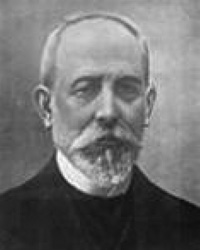
The word phylogeny was introduced circa 1872; the Merriam-Webster Dictionary gives its first meaning as “the evolutionary history of a kind of organism” and its second as “the evolution of a genetically related group of organisms as distinguished from the development of the individual organism.” According to the Encyclopedia Britannica (in a November 2014 update written by John L. Gittleman), phylogeny refers to the history of the evolution of a species or group, especially in reference to lines of descent and relationships among broad groups of organisms. Since Darwin’s concepts, the data and conclusions of phylogeny show clearly that the tree of life is the product of a historical process of evolution.
The Argentine naturalist Florentino Ameghino (Figure 5, right) was essentially self-taught—in German, a selbstlerner— because he earned only an elementary teacher degree. But he reached high levels of knowledge as paleontologist, zoologist, geologist, and anthropologist with a monumental and original scientific production. La Antigüedad del Hombre en el Plata (The Antiquity of Man in the Plata) and Los Mamíferos Fósiles en la América Meridional (The Mammalian Fossils in Southern America) were published in 1878. In 1884, Ameghino produced Filogenia (Phylogeny), wherein he developed his evolutionist conception of biology, with a Lamarckian bias and many Darwinian ideas; in fact, in the second part of the introduction, Ameghino honors Darwin and refers to his famous work (Figure 6, below). Although his mathematical background was poor, Ameghino strongly favored the mathematical analysis of zoology and attempted to include something about this in his book.
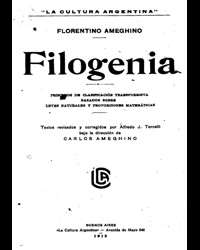
The objective of phylogeny is to offer foundations for a natural classification of live beings, and Ameghino tries to accomplish this by means of a theory of evolution. He assigned to it the characteristic of an exact science, calling it transformism or Darwinism, applying in his development a logical spirit and even occasionally a logical mathematical line of thought [5]. Examples are the geometrical analysis of the skull, which is an arithmetic description of the denture; an arithmetic and symbolic expression of the locomotive extremities; and what he calls a “serial procedure” to restore an antecessor, be it a genus, family, or any other group. The main idea is based on the determination of an organ’s primitive shape to find its evolutionary course. This procedure requires a solid knowledge of comparative anatomy.
Another of Ameghino’s outstanding contributions is the establishment of several biomorphogenetic principles, such as modifications by
- size decrease, when evolution occurs by reduction, such as atrophy (e.g., coccyx or rudimentary teeth)
- size increase, when the evolution takes place by augmentation, such as in large vertebrates (e.g., neck length and an elephant’s trunk)
- simplification, when evolution tends to make uniform some structures, such as cranial junctions or a reduced number of mammary glands
- complication, when evolution produces more complex or diversified structures, such as horn branching of nervous system ramifications
- ossification, such as in fish, tendons, or integument tissue
- soldering, when certain parts amalgamate or fuse, such as vertebral anchylosis in glyptodonts or, in birds, metacarpal and metatarsal union.
The principle of biological irreversibility, i.e., that any lost form or species cannot reappear, is another basic law that Ameghino described. All of his intellectual production and integrative and interpretative capacity show a mathematical mind, even though his actual mathematical knowledge was minimal because he was not taught more than elemental arithmetic and geometry.
Discussion
The time span between Lamarck’s birth in 1744 and Ameghino´s demise in 1911 is 167 years. Thus, the conceptual scientific upheaval—along with the overflow of clear ideas that the four naturalists brought about in biology, zoology, anthropology, and paleontology (and eventually also in botany)—took less than about 150 years, sweeping away in one stroke centuries of misconceptions, clarifying millennia of evolution, and triggering strong and stormy waves of opposition in purely social and human areas, where beliefs played and still play a significant role.
These men were keen explorers and observers of nature, often skillfully handling the very same natural phenomenon as experimental method, such as when Darwin describes in great detail in Chapter 7 (“Instinct”) in On the Origin of Species the slavery instinct of some ants:
When the nest is found inconvenient, it is the slaves which determine the migration, and actually carry their masters in their jaws.
A few pages further on, he mentions that
bees have practically solved a recondite problem, and have made their cells of the proper shape to hold the greatest possible amount of honey, with the least possible consumption of precious wax in their construction
In Chapter 11 (“Geographical Distribution”), Darwin concludes that
seeds of 14/100 plants of any country might be floated by sea-currents during 28 days, and would retain their power of germination.
Such observation demonstrates one possible distribution mechanism of seeds. A little further on in the same chapter, he adds,
I picked up in my garden 12 kinds of seeds, out of the excrement of small birds, and these seemed perfect, and some of them, which I tried, germinated.
In both books (Origin [3] and Voyage [4]), Darwin shows an eagerness to quantify by measurement (of distances, lengths, and widths of rivers; water velocity in brooks; angles in degrees of a given height with respect to the horizon line; weights of animals or rocks; even giving probable estimations when a direct measurement was not possible). Obviously, he had taken with him the necessary equipment for that purpose. Often, the reader will find in both books comparisons between similar species from different geographical regions. His updated knowledge was outstanding and surprising when one considers the slow speed of communication in those days.
Wallace and Ameghino display quite similar attitudes in their general approach to these scientific subjects. Lamarck, in this respect, appears to be somewhat more distant or less overt in his overall position, perhaps not because of himself but because of the environment that systematically opposed his theories.
In all four men, one can find many social elements and philosophical components, such as when Darwin describes and comments in his Voyage on the Tierra del Fuego’s Indians’ behavior and their dress, attitudes, and language, even showing surprise at their quickness in learning some English and/or Spanish. They are qualified as “savages,” friendly by and large, but not to be trusted.
A Note on Darwin’s Artistry
Voyage deserves some special words here. The ship sailed from Davenport on 27 December 1831, returning to England, at Falmouth, on 2 October 1836; the whole trip lasted four years, nine months, and five days. On 20 October 1835, the ship left the Galapagos Archipelago, steered toward Tahiti, and so left America, which means that Darwin stayed and explored South America for three years and ten months, spending most of this period in the Argentinian and Chilean regions. He twice visited the Malvinas Islands [now the Falkland Islands (United Kingdom)], on March 1833 and March 1834, making the following comments:
This archipelago is situated in nearly the same latitude with the mouth of the Strait of Magellan; it covers a space of one hundred and twenty by sixty geographical miles, and is little more than half the size of Ireland. After the possession of these miserable islands had been contested by France, Spain, and England, they were left inhabited. The government of Buenos Aires then sold them to a private individual, but likewise used them, as old Spain had done before, for a penal settlement. England claimed her right and seized them.
After crossing the Magellan strait, the Beagle reached the Chilean coast, sailing on 7 March 1835 from Concepción to Valparaiso, where she anchored on 11 March. Two days later, Darwin set out to cross the Cordillera, heading toward Mendoza, on the Argentinian side. He did the journey using first the Portillo de Piuquenes pass and returning via the Uspallata pass somewhat to the north, both historical because they were the routes taken by the liberating army led by General José de San Martín in 1816 during the war of independence against Spain. The round trip from Chile to the Argentinian side on the east took from 7 March until 29 March 1835. Darwin’s descriptions are beautiful, such as, for example, when he refers to the rivers that flow in these valleys. He suggests that they ought rather to be called mountain torrents, because of their moving stones, roars, and sounds that
speak eloquently to the geologist… it was like thinking on time, where the minute that now glides past is irrevocable.
Darwin was accompanied by local people (arrieros) and several mules that carried supplies and various working material, often at altitudes of more than 4,000 m above sea level.
The closing paragraph of Origin has to be fully transcribed for its deep content, which sounds poetic, and even suggests a trace of sadness:
It is interesting to contemplate an entangled bank, clothed with many plants of many kinds, with birds singing in the bushes, with various insects flitting about, and with worms crawling through the damp earth, and to reflect that these elaborately constructed forms, so different from each other, and dependent on each other in so complex a manner, have all been produced by laws acting around us. These laws, taken in the largest sense, being Growth with Reproduction; Inheritance which is almost implied by reproduction; Variability from the indirect and direct action of the external conditions of life, and from use and disuse; a Ratio of Increase so high as to lead to a Struggle for Life, and as a consequence to Natural Selection, entailing Divergence of Character and the Extinction of less-improved forms. Thus, from the war of nature, from famine and death, the most exalted object which we are capable of conceiving, namely the production of the higher animals, directly follows. There is grandeur in this view of life, with its several powers, having been originally breathed into a few forms or into one; and that, whilst this planet has gone cycling on according to the fixed law of gravity, from so simple a beginning endless forms most beautiful and most wonderful have been, and are being, evolved.
Conclusions
The richness found in these four naturalists’ productions is so great and awe-inspiring that it defies any critical mind: Lamarck, because of his early vision; Darwin, for the amplitude and amount of detailed well-digested data; Wallace, for accurate and well-aimed conciseness; and finally Ameghino, for an elaborated and highly detailed anthropological piece.
As for the question of believers, disbelievers, and doubters…let us leave it hanging here, where it is appropriate to recall Einstein’s thought: “God does not play dice” (in German, Gott würfelt nicht). Oh, and yes, to answer the question in the title: there is some biological engineering viewpoint in all of this!
References
- A. Einstein, Mein Weltbild, C. Seelig, Ed. Frankfurt, Germany: Ullstein Buch, 1934.
- J. B. Lamarck, Philosophie Zoologique, F. Sempere and V. Blasco Ibáñez, Transl. Paris: G. Baillière, 1809.
- C. R. Darwin, On the Origin of Species. By Means of Natural Selection or the Preservation of Favoured Races in the Struggle for Life. London: John Murray, 1859. [Bantam Classics, reissue edition (2009).]
- C. R. Darwin, The Voyage of the Beagle. Vercelli, Italy: White Stars Publishers, 1845. [Excerpts from Journal of Researches into the Natural History and Geology of the Countries Visited by the HMS Beagle (1835), London: John Murray, 1845.]
- M. Valentinuzzi, “Florentino Ameghino como biólogo matemático,” An. Soc. Cient. Argentina, vol. CLVIII, pp. 4–34, 1955.


